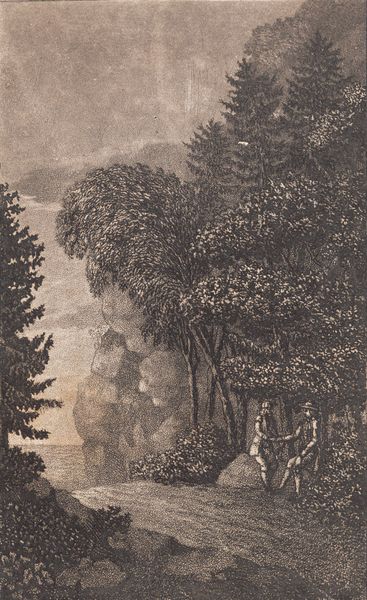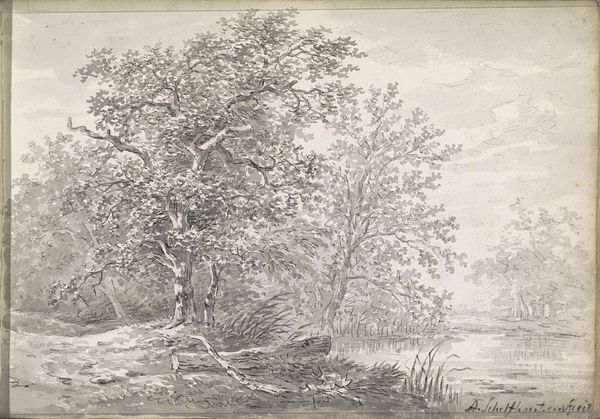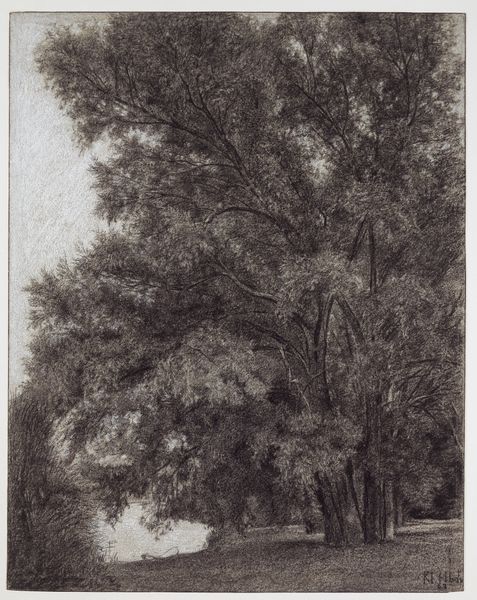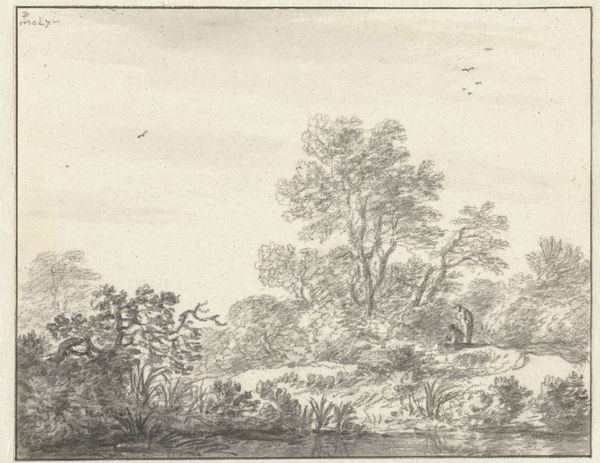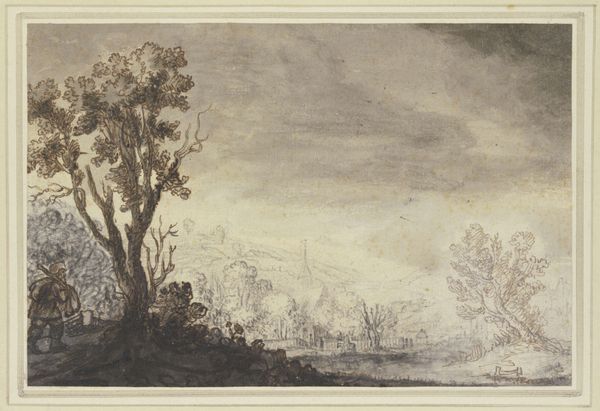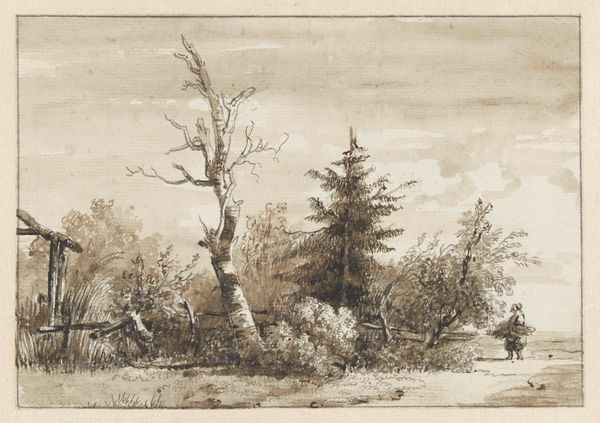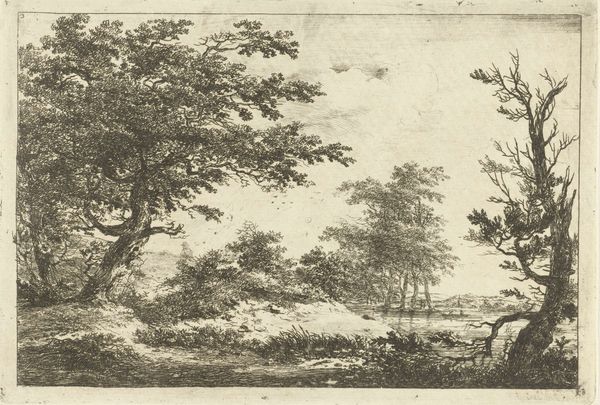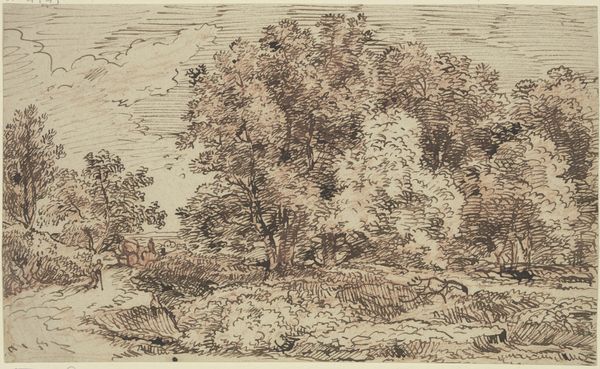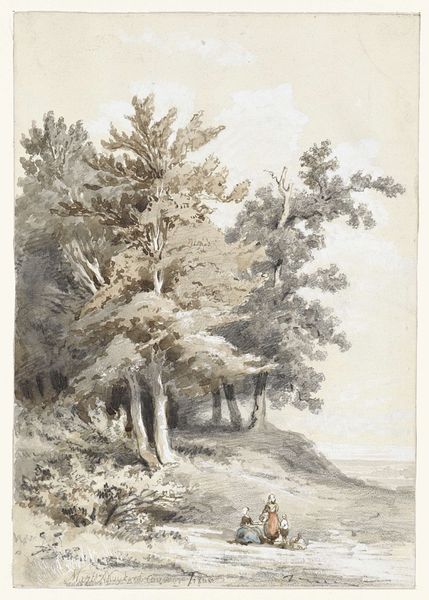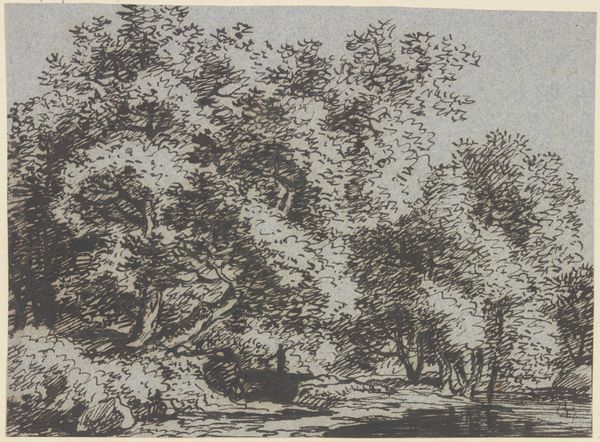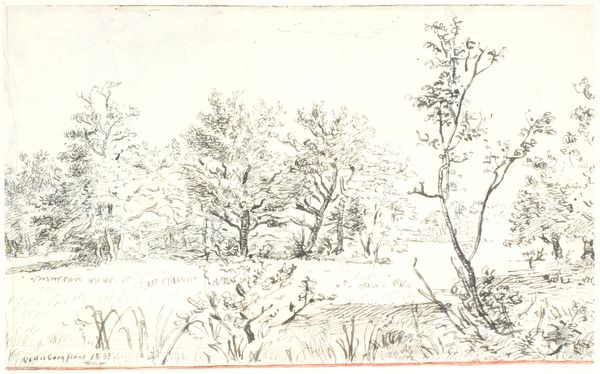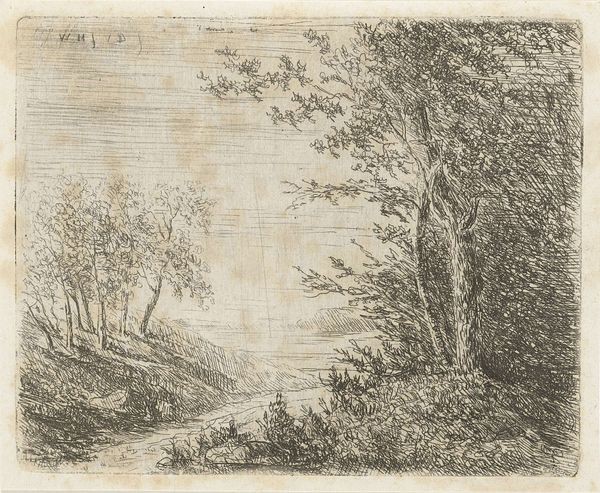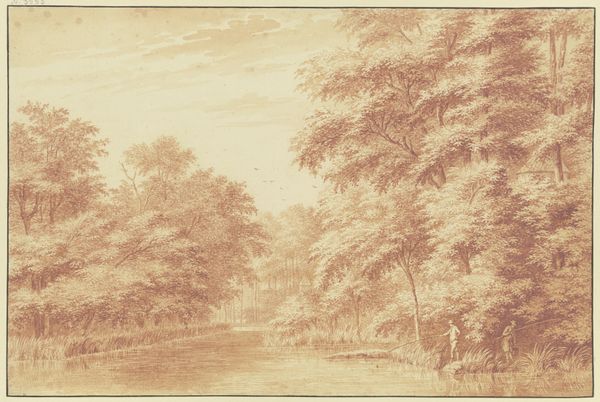
drawing, paper, pencil, charcoal
#
drawing
#
pencil sketch
#
landscape
#
etching
#
paper
#
romanticism
#
pencil
#
charcoal
Copyright: Public Domain: Artvee
Editor: So, here we have John Constable’s “Trees and Deer,” created around 1825 using pencil and charcoal on paper. It's a landscape sketch. There's something almost haunting about the way he's rendered the trees; they feel very alive. What do you see in this piece? Curator: I’m immediately drawn to the materials themselves. Constable’s choice of pencil and charcoal – easily sourced, relatively inexpensive – points to a specific relationship to landscape. Was he considering the accessibility of art making and its broader social implications? I also think of the labor involved, Constable repeating the act of observing and representing nature through readily available materials, thereby questioning the traditional boundaries between ‘high art’ and everyday practice. Editor: That’s a really interesting way of looking at it. I was focused on the image itself, but I hadn't considered the significance of the humble materials he chose. Did using cheaper, easily sourced material affect his status at the time? Curator: Absolutely. By choosing pencil and charcoal, Constable engages with the art market in a complicated way. Was he attempting to democratize landscape art by working in readily available mediums? Was this then circulated or seen widely by a buying audience, or limited due to its form as a preliminary sketch. Did he sell studies for less than the "finished work"? We must consider it to fully grasp the work’s contemporary function. Editor: So, understanding the economics and the accessibility of materials gives us a completely new way to understand this drawing. Curator: Precisely. It challenges us to reconsider what we value in art. Editor: I’ll definitely look at art through a different lens now. Focusing on the materials and the production process reveals so much. Thanks!
Comments
No comments
Be the first to comment and join the conversation on the ultimate creative platform.
